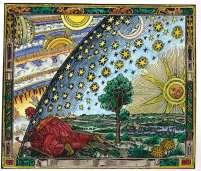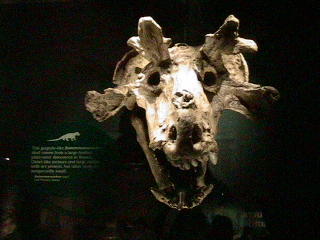I mean when I referred to fifth dimensional views you know that the computer screen includes not only it's functionability in relation to science, but adds that bit of extended flavour to model construction we call imaging right?
a) Compactifying a 3-D universe with two space dimensions and one time dimension. This is a simplification of the 5-D spacetime considered by Theodor Kaluza and Oskar Klein. (b) The Lorentz symmetry of the large dimension is broken by the compactification and all that remains is 2-D space plus the U(1) symmetry represented by the arrow. (c) On large scales we see only a 2-D universe (one space plus one time dimension) with the "internal" U(1) symmetry of electromagnetism.
Remember Brian Greene's is from 2001. What might have change since then with Brian Greene and his views about about that distant bounding surface. Of course to many of us it is a brane world recognition.
If we did not recognize what advancements might have been accomlished with mathematics and the fifth dimensional views on our computer screens? Could we ever really talk about such idealizations, without understanding that there are ways to look at this, and reductional valuations taken from fifth dimensional views down to 2? Our computer screen. Of course Brian Greene has included the thickness of the bounded surface, so, time had to be inclusive here would it not?:)
The Edge
So how can such a thing as Brian calls a Bounded surface and relate it's thinness to a vast capability? Also in the cosmic perspective, to have brane collisions illustrated by Steinhardt, become much more then our views held to the surface mathematically inclined. To be revealled, in stringy dynamics, at the basis of our viewing?
Such creation slotted into the time frames of this beginning, is stil questioning the valuation of what existed before stringy ideas manifest, so what pray tell, could have ever been "the sun" in behind, that illuminates "shadows" on the wall?
The Randall-Sundrum braneworld model is characterized by ordinary matter being confined to a hypersurface embedded in a higher-dimensional manifold through which gravitational signals may propagate
Physics strings us along by Margaret Wertheim of LAtimes.com
In the latest, hottest Big Science tome — the delightfully titled "Warped Passages" — Harvard physicist Lisa Randall describes the idea that the universe we see around us is but one tiny part of a vast reality that may include an infinite number of other universes. Randall is an expert on both cosmology and that arcane branch of particle physics known as string theory. By marrying the two fields, she and her colleagues have formulated a picture in which our universe may be seen as a soap-film-like membrane (a "braneworld") sitting inside a much larger space: the bulk. According to general relativity, the universe we live in has four dimensions: three of space and one of time. Randall's work extends this framework and posits the existence of a fifth dimension. The fifth dimension is the bulk, and within its immeasurably expanded space, there is no reason to assume that ours is the only cosmos.
So there are amazing leaps here then to new world recognitions of ideologies that formed from where?
John Ma Pierre:
What is remarkable is that much of the recent progress in understanding non-perturbative aspects of string theory and supersymmetric gauge theories has been made in parallel, using each to gain knowledge and insights about the other. There are various reasons for this intimate connection between supersymmetric gauge theories and string theory. One is that supersymmetric gauge theories arise as low energy effective descriptions of compactified string theories in limits where gravity decouples. Another reason is that superstring theories can be formulated in backgrounds that contain D-branes, and supersymmetric gauge theories serve as effective world volume theories for these D-branes. In addition to these direct examples, it is sometimes the case that intuition about non-perturbative physics that is gained in one area can be directly applied to the other. An example of this is the guiding principle that singularities in the quantum moduli space of a low energy effective theory signal the appearance of new massless states. This was seen to be a generic phenomena in supersymmetric gauge theories and was subsequently applied to the resolution of conifold singularities by massless black holes in string theory.
Wow! More then five!:) Okay reference was made by Sean on a one liner about magic and his meeting in a bar. Where a sister as the science teacher explains this statement. Well it has been gathered up for consumption in other areas, so of course we have to explain this as now this conversation is leading other talks to consider more issues about what began as a mystery has no place in the developement of science.
I am a little dismayed by this, because anomlistic features without explanation would seem as such, while it is true, that it can be expalined afterwards, once we understood how something from the 21st century dropped into our laps for consideration:) We know what this means right? It had to be coisstent and logicall so repeatability can hav eother hands , for verification. How did you expalin it and lead them hwere one had not gone before?
That sounded like Startrek for a minute there:)



